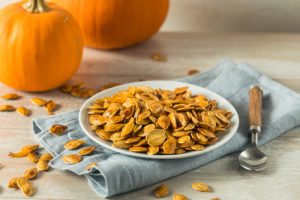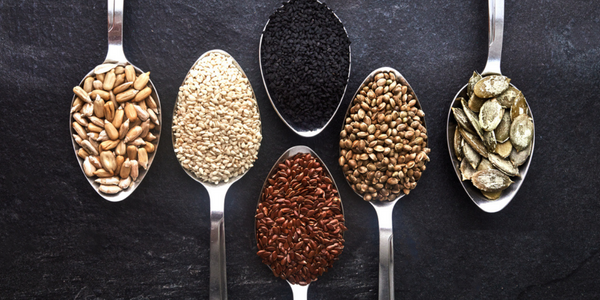Menopause, or the phase at which point a woman’s menstrual cycle ends, typically occurs between the ages of 45 and 50 and can be accompanied by many symptoms, such as emotional mood swings, hot flashes, fatigue, insomnia, etc. For most women, menopause is diagnosed as a natural phase of life.
When it comes to natural approaches for stabilizing these shifting hormones and managing symptoms, a number of approaches are possible, for some women one approach is seed cycling.
What is Seed Cycling?
Also known as reproductive system cleansing or seed detoxification. This practice is common for women looking to boost fertility, naturally cleanse the female reproductive system, and tone the uterus back to health.
In addition to aiding in fertility and reproductive health, it is also used for hormone balancing and other issues associated with menopause, such as the common symptoms of hot flashes, insomnia and more. This practice is also found to help women dealing with polycystic ovarian syndrome (PCOS) and endometriosis.
How Seed Cycling Works
Seed cycling can typically be done once or twice a year. The practice works by partaking in various seeds during different stages of the menstrual cycle and helps increasing low progesterone levels, thus helping relieve symptoms and enhance hormonal balance.

During the second half of their cycle, or the luteal phase, seed intake is changed to consuming one tablespoon of both ground sunflower and sesame seeds per day until the first day of the next period. During this phase, the polyphenol found in sesame seeds can help prevent estrogen levels from rising too high, while the sunflower seeds are considered helpful with boosting progesterone levels.
For menopausal and postmenopausal women who no longer have a regular menstrual cycle, or cycle at all, it can be suggested to use the phases of the moon as a guide to cycle dates, with day one of the cycle beginning on the day of a new moon and switching to the next seed cycle on the day of the full moon.
Menopausal Symptom Effects
The primary appeal to seed cycling is that hormonal balance can occur and by regulating progesterone, which stimulates healthy progesterone receptors in the uterus, the effects can help relieve hot flashes and night sweats and even improve sleep quality.
In addition, this practice is also considered helpful in balancing estrogen in the body, which can improve hormone metabolism, reduce symptoms of hot flashes, mood swings and vaginal dryness.
The symptoms of menopause are meant to indicate what is happening in the body. Though these symptoms may come with a medical explanation, many women find that their symptoms improve significantly once they understand how their bodies work. For example, a hot flash or night sweats may mean that the body has trouble with estrogen levels and does not have the good progesterone to balance this process. This is where seed cycling can help rebalance hormone levels naturally and provide relief.
Other Benefits of Seed Cycling
Seed cycling is considered helpful when it comes to reducing fat in the body, which is often a normal part of menopause. The body needs fat to function, and once menopause begins, hormone fluctuations and reduced muscle mass can lead to increased weight and a longer period of time to get rid of excess fat stored in the body.
Women who are seed cycling have been found to have improved responses to reducing their chances of osteoporosis and even prevent it completely through healthy eating and regular exercise. The seeds included in seed cycling, flax seeds in particular are rich in lignans, or polyphenols, whose estrogenic effect is beneficial in preventing osteoporosis.
Progesterone is also known to increase the body’s overall immunity, which helps reduce the risk of infections and bladder infections. With the proper balance of hormones, women can have healthier urinary tracts.
Though maybe not a concern later in life, according to the National Institute of Health, progesterone levels must be certain for a woman to become pregnant, because of this, seed cycling can help balance progesterone levels so that women can increase their chances of getting pregnant even after age 40, for those interested.
The imbalance of estrogen and progesterone levels that occurs with menopause can cause mood swings, anxiety, insomnia and more. By naturally rebalancing these hormones, women can improve their overall quality of life.
While menopause is a natural part of women’s lives, many women have symptoms that continue long after age 50. It can be difficult to cope with the symptoms and try to make sense of what is taking place on a hormonal level, even more so when it comes to figuring out effective natural ways to deal with these imbalances. For some women, seed cycling not only helps address hormone imbalances and health concerns, it even provides a bit of improvement in quality of life.





